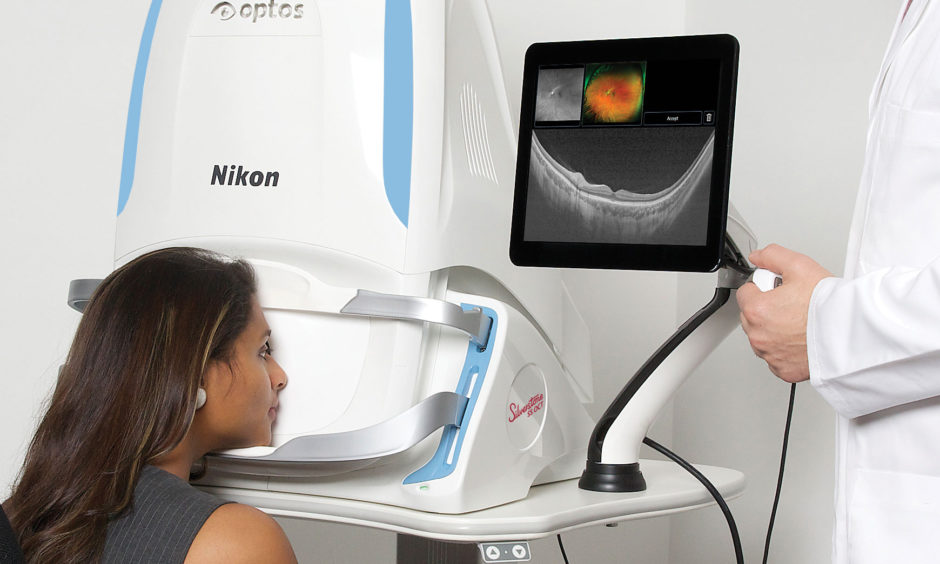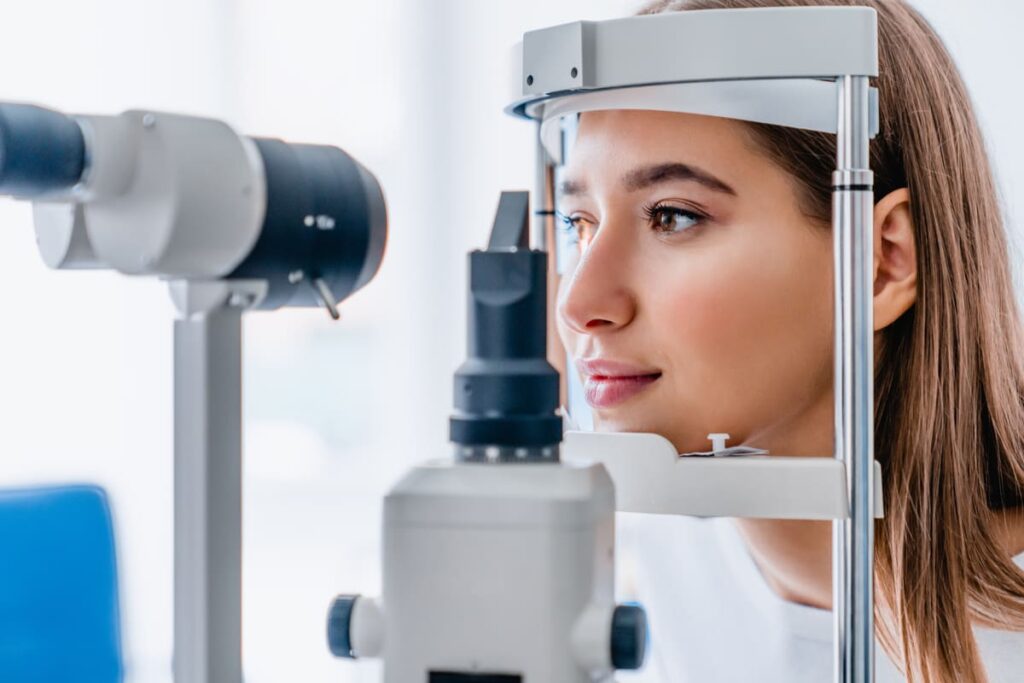Prediabetes is one of the fastest-growing health concerns in the United States, and experts warn that the numbers continue to climb each year. According to the Centers for Disease Control and Prevention (CDC), more than 96 million American adults—over one in three—are living with prediabetes. Even more alarming, most of them don’t even know it. This silent condition often develops without symptoms and can progress into type 2 diabetes, putting individuals at risk for serious health issues including heart disease, kidney failure, and vision loss.
Understanding the prevalence of prediabetes and the impact diabetes can have on the eyes is critical for prevention and long-term health. Annual eye exams play a vital role in detecting diabetic changes early, sometimes even before other symptoms of the disease become apparent. At Optical Illusions, our eye doctors are highly trained in diabetic eye care, providing patients with the latest technology and expertise to safeguard vision.
The Growing Problem of Prediabetes in America
Prediabetes occurs when blood sugar levels are higher than normal but not yet high enough to be classified as type 2 diabetes. The condition indicates that the body is not processing glucose effectively, often due to insulin resistance. Lifestyle factors such as obesity, poor diet, lack of exercise, and genetics all play a role in its development.
In the past, prediabetes was most commonly associated with adults over 40. However, new data shows that prediabetes is becoming more prevalent in younger populations, including teenagers and children. The rise in childhood obesity and sedentary lifestyles has created a concerning trend that could lead to lifelong health complications.
The biggest challenge with prediabetes is its invisibility. Without noticeable symptoms, individuals often remain unaware of the condition until it progresses to type 2 diabetes. That is why regular health screenings and lifestyle adjustments are so important.
Why Diabetes Is Such a Serious Health Issue
Diabetes is not just about high blood sugar. It is a complex disease that affects multiple systems in the body. Uncontrolled diabetes can damage blood vessels, nerves, and organs over time. Complications include:
- Cardiovascular disease: Higher risk of heart attack and stroke.
- Kidney disease: Chronic damage can lead to kidney failure.
- Neuropathy: Nerve damage, particularly in the legs and feet.
- Eye disease: Retinopathy, glaucoma, cataracts, and even blindness.
In fact, diabetes is one of the leading causes of preventable blindness in adults, which highlights the need for routine eye care alongside medical management.
How Diabetes Affects the Eyes
The connection between diabetes and vision is profound. High blood sugar levels damage the tiny blood vessels in the retina, the light-sensitive tissue at the back of the eye. This damage is known as diabetic retinopathy. Over time, retinopathy can lead to bleeding, swelling, scarring, and vision loss if not treated promptly.
Other diabetes-related eye conditions include:
- Diabetic macular edema (DME): Swelling in the macula, causing blurred central vision.
- Cataracts: Diabetes increases the risk of cataracts and causes them to develop earlier in life.
- Glaucoma: People with diabetes are more likely to develop glaucoma, which damages the optic nerve.
The most troubling fact is that many of these eye diseases start silently. A patient may have perfect vision one day but already have advanced retinal damage developing unnoticed.

Why Annual Eye Exams Are Essential
The American Optometric Association (AOA) and the American Academy of Ophthalmology (AAO) strongly recommend that all people with diabetes receive a comprehensive eye exam at least once a year. For patients with prediabetes, early and regular exams are equally important since changes can begin before a formal diabetes diagnosis.
During an eye exam, an optometrist or ophthalmologist can detect subtle signs of diabetic eye disease using advanced technology such as retinal imaging, OCT scans, and widefield imaging systems like Optos. In many cases, eye doctors can identify changes in blood vessels that reveal diabetes before primary care physicians confirm the diagnosis.
At Optical Illusions, our team uses the latest imaging technology to monitor for diabetic retinopathy and other complications, ensuring that patients get early treatment to protect their vision.
The Importance of Early Detection
Early detection is the key to preventing severe vision loss. Diabetic eye disease often progresses without symptoms in the beginning. Patients might only notice changes when the disease has already advanced, making treatment more difficult. By catching the disease early, eye doctors can recommend interventions such as tighter blood sugar control, medications, laser treatments, or injections to slow progression.
Lifestyle Changes to Reduce Prediabetes Risk
While eye exams are essential for monitoring and diagnosis, lifestyle changes remain the first line of defense against prediabetes and diabetes. Key strategies include:
- Healthy eating: Focus on whole grains, lean proteins, fruits, and vegetables.
- Exercise: At least 150 minutes of moderate activity each week.
- Weight management: Even small reductions in weight can improve insulin sensitivity.
- Regular checkups: Monitoring blood sugar levels with a physician.
These changes not only reduce the risk of type 2 diabetes but also lower the likelihood of developing diabetic complications like eye disease.
The Role of Advanced Technology in Diabetic Eye Care
One of the reasons Optical Illusions is recognized as a leader in diabetic eye care is our commitment to advanced technology. Our clinics feature Optos ultra-widefield retinal imaging, OCT (optical coherence tomography), and digital photography to provide detailed views of the retina. These tools allow our doctors to track even the smallest changes, giving patients a clear advantage in managing their eye health.
We also utilize technology to educate patients. By showing detailed retinal images during the exam, patients can see firsthand how diabetes impacts their eyes, empowering them to take better care of their health.
Why Prediabetes and Eye Exams Go Hand in Hand
Prediabetes is often overlooked because it feels less urgent than a diabetes diagnosis. However, the eye is one of the first places where complications can begin, and only a trained eye doctor can detect them. For many patients, an eye exam is the first step in identifying diabetes or prediabetes.
That is why combining routine medical checkups with annual eye exams is so important. Together, these appointments provide a comprehensive picture of overall health and ensure that no early warning signs are missed.
Optical Illusions: Your Partner in Diabetic Eye Care
At Optical Illusions, we believe in proactive care for every patient, especially those at risk for or living with prediabetes and diabetes. Our doctors are highly trained in diabetic eye management and use cutting-edge diagnostic tools to catch changes early. Whether it is your first exam or you are managing long-term diabetes, our goal is to help you protect your sight for life.
We also understand the importance of accessibility. With multiple convenient locations in San Jose, San Mateo, San Ramon, and Juneau, our practices make it easy for patients across the Bay Area and Alaska to receive the care they need. As a VSP Premier Edge practice, we ensure patients maximize their insurance benefits while receiving the highest standard of eye care.
Schedule Your Eye Exam Today
Prediabetes is a silent but growing epidemic in the United States. With millions of people affected and many unaware of their condition, it poses a significant public health challenge. The eyes, however, provide a unique opportunity for early detection of diabetic changes. Regular comprehensive eye exams are critical not only for preserving vision but also for identifying prediabetes and diabetes before more serious complications arise.
Keeping your eyes healthy starts with a comprehensive eye exam. At Optical Illusions, our experienced optometrists use state-of-the-art equipment to check your vision and eye health. We make sure your prescription is up to date and help you find lenses that support your lifestyle. Our comprehensive exams include screenings for ocular risk, advanced diagnostic instruments, and personalized care plans to keep your eyes healthy. Schedule an eye exam at one of our convenient locations in San Jose, San Mateo, San Ramon, and Juneau.




